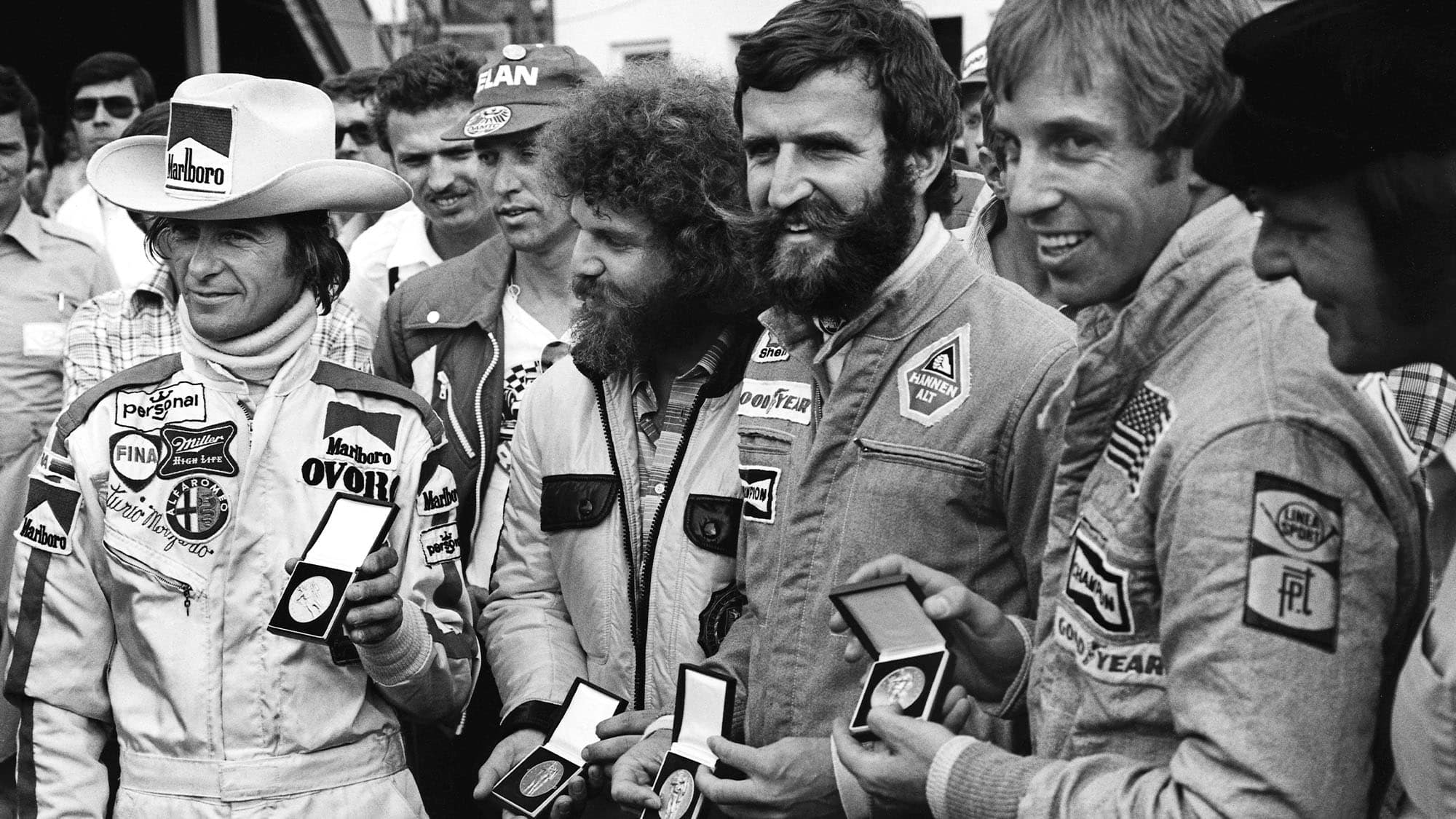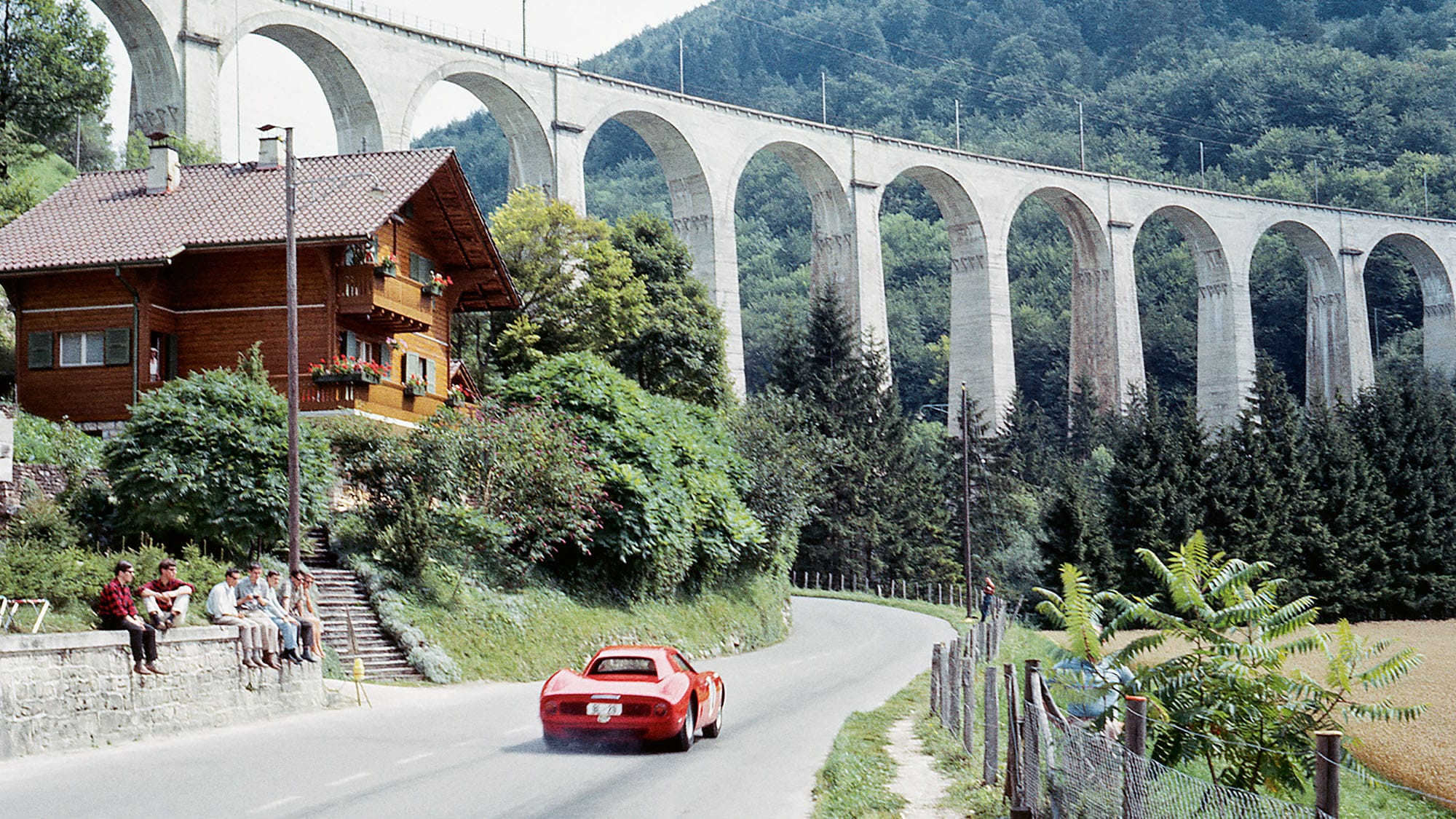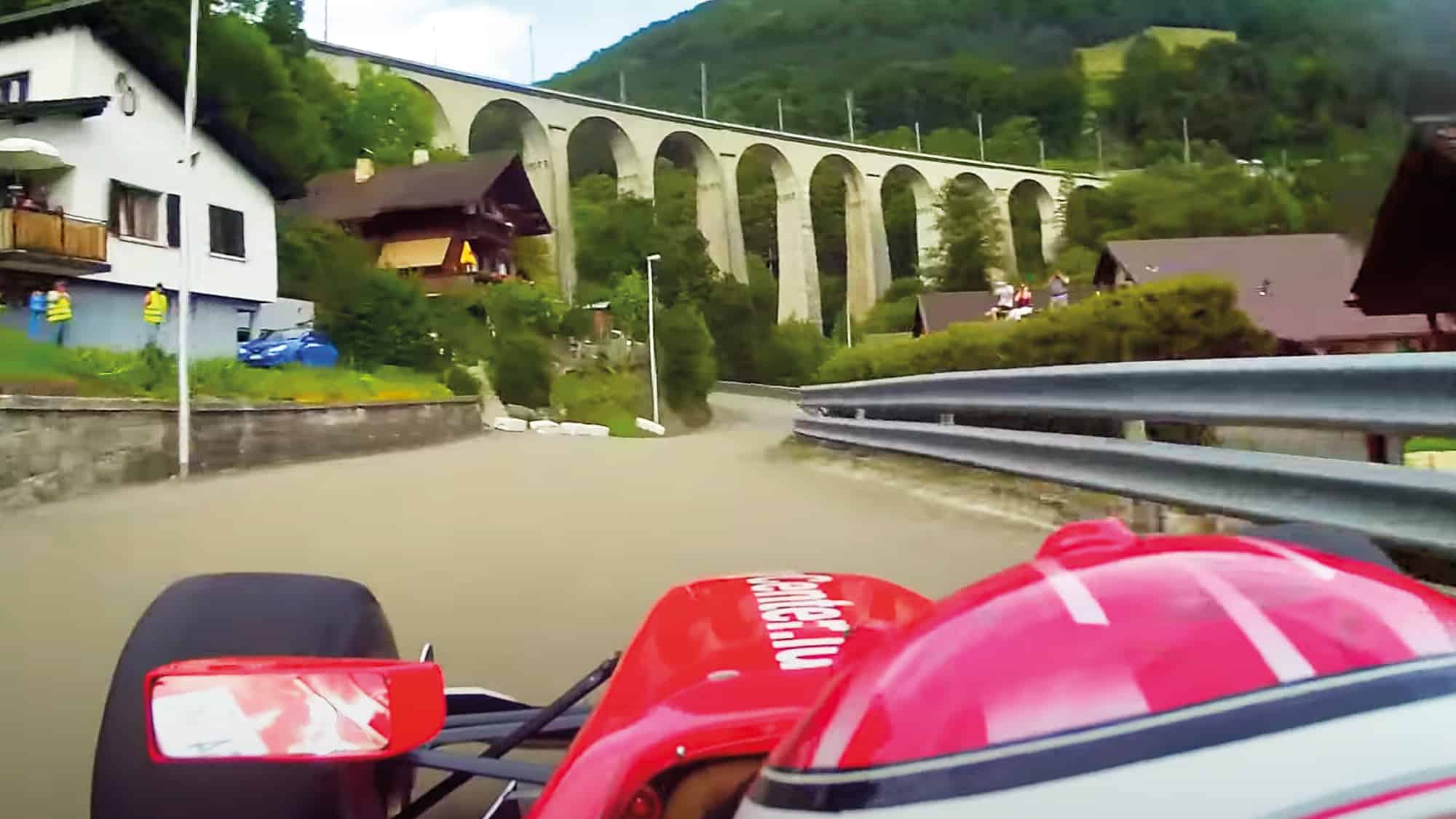
Rules change on safety restarts
For 2012, the FIA aims to make safety car restarts more exciting by removing lapped cars from the leading group. These will be allowed to unlap themselves and join the…
Well, the circuit may have looked too short and rather uninspiring, but my God, what a remarkably eventful race the Sakhir Grand Prix in early December turned out to be.
I’ve been a fan of Sergio Pérez since his days in British F3 and was so pleased for him. It will be a great shame if he’s not on the grid next year, but it’s impossible not to have enormous sympathy for George Russell. He had victory snatched from him twice after an unforgettable drive.
As for Mercedes, I can’t help but feel that a team that has been the gold standard for seven seasons is, temporarily at least, perhaps more deserving of an award that Denis Jenkinson was fond of handing out from time to time – ‘Team Shambles’!

Track marshal Walter Raab (centre) was one of those rewarded for his part in saving Niki Lauda
The Photograph in your Arturo Merzario story [The little man in the cowboy hat, January 2021] of the men receiving medals for the rescue of Niki Lauda includes someone who is described as a representative of Guy Edwards. In fact he is a marshal, who, despite not having fireproof clothing, ran 100 yards with his extinguisher and got close enough to the Ferrari inferno to win those precious few seconds that might have saved Lauda’s life. His splendid coiffure is distinct in the photos of the rescue. The medal they are receiving is the Golden Christophorus, awarded by ÖAMTC, the Austrian motoring body.
The drivers involved in the rescue rightly get their dues, but, because they are racing drivers, all the attention is focused on them. The marshal was a volunteer who had no idea he would be involved in such a horrific incident, and it’s fitting that his name, too, should be remembered. So, bravo, Walter.
January’s editorial raises the issue of whether Lewis Hamilton should be knighted for his achievements. He has long been recognised by aficionados as a ‘Marmite character’ who seems to evenly divide opinion. To some, Hamilton is the greatest racing driver of all time. To others, he is a driver who has never ventured outside Formula 1 since his first appearance and who has always had a car underneath him capable of winning races, if not always a championship. There can be little doubt that he is by some measure the class act of his generation and some of his recent in-car race craft has been quite sublime.
There is considerable precedent for leading personalities in motor racing to become knights of the realm, but in my view awards of this level should be withheld from drivers until their career has come to an end, as was the case with Stewart and Moss. Hamilton’s activities beyond the cockpit will not have gone down well in some circles and it may be that he has to wait some while before further honours come his way, as was the case with the late John Surtees, who certainly ruffled a few feathers along the way. The New Year Honours list may make interesting reading indeed.
I’m not sure Hamilton is quite ready to belong to the pantheon alongside Fangio, Moss, Clark and Senna, but he is not far away from it – British too!
In December’s Motor Sport, Mark Hughes quotes Lucas Di Grassi: “It can’t be so slow that it’s perceived to be easy.”
I would suggest that the opposite has greater possibilities for the future. Wet races are some of the most spectacular with the greatest drivers showing the highest level of skill at a much slower speed than usual. Speed is just a measuring device. So removing aerodynamic grip could remove many of the ills that have dogged F1 for decades, such as the boredom of ‘running on rails or instant crash’, instead offering an in-between stage in which the best can show their art on the ragged edge. No more talk of, “That’s not even a corner in a modern F1 car.” No more,
“I couldn’t follow due to dirty air.” No more, “The braking zone is too short.”
With regard to comparing the merits of Schumacher vs Hamilton [Lewis vs Michael: who comes out on top?, December 2020], my vote goes to the former for the following reasons:
1. Schumacher had to contend with many more formidable adversaries: both Hill and Villeneuve in the often dominant Williams, Häkkinen in a fully competitive McLaren, not to mention Alonso in an increasingly competitive Renault.
2. The Pirelli factor did not exist in Schumacher’s day whereby drivers have to drive in the race at several seconds slower than their fully competitive times in order to manage their tyres, so before this competition was considerably more challenging.
3. Schumacher’s Ferrari was dominant for a far shorter period and by a smaller margin than was the Mercedes of Hamilton.
4. The increase in the number of grands prix in Hamilton’s era gave him more opportunities to accrue wins.
5. Improvements in the reliability of F1 cars have also favoured Hamilton over Schumacher, and therefore attempting to make comparisons with any of the former greats impossible.
As a forensic structural engineer, the best examination I can make of the publicly available information regarding Grosjean’s crash at Bahrain suggests it is unlikely that he was saved by the halo.
Impact damage to the halo structure is visible near its front but not at its base. At the time of the impact Grosjean would have been displaced towards the front of the cockpit and his head would have been tilted forward to the full extent permitted by his HANS device. These two factors would place his head below the height of the guardrail impact upon the halo. This situation might have changed if the survival cell was angled upward or downward and that is difficult to know. It would have had to be projected steeply downward for this to change materially.
The crash was caused by Grosjean’s reckless driving in chopping across traffic without being able to see it was clear to do so. That kind of behaviour is much more common in situations in which drivers believe they are not vulnerable to injury in the event of a crash. It may be that the halo contributed to the crash occurring but not to the, thankfully happy, outcome.
Whatever the key findings of the investigation, we can be confident that the FIA will not review the halo as such things are never reversed.

Werner Biedermann’s 1965 run at St-Ursanne

And a recent shot at the same location showing little has changed
Brian Joscelyne’s photos in your latest edition [Racing back in time, January 2021] are fabulous, but isn’t the Swiss hill climb shown the fearsome St-Ursanne Les Rangiers rather than between Sierre and Crans-Montana? St-Ursanne is still a round of the European Hillclimb Championship, though of course it was cancelled this year. The on-board videos of Simone Faggioli or Christian Merli tackling the course are the closest you’ll ever get to the Isle of Man TT on four wheels these days. Only very brave people need compete! This modern-day picture shows that little has changed since 1964 apart from crash barriers replacing the field fences:
[We took our information from the book, where the location is misidentified – but now we want to visit St-Ursanne! – Ed]
Your December editorial and Mark Hughes’ column raise pertinent questions over the future of F1 and motor sport in general. Although global warming is an important issue for all of us, with CO2 accounting for 76 per cent of all greenhouse-gas emissions, only 14 per cent is derived from transport, motor sport only representing a tiny fraction of this percentage.
So if all forms of motor sport were abolished overnight, it would be unlikely to make any appreciable difference – which is not, of course, grounds for being complacent.
The obsession with electrification does not take into account the increases in generating capacity required, the finite supplies of elements involved in battery manufacture, the dependency of smaller OPEC countries on oil to fund their state spending, range issues in larger countries, the expense of establishing charging networks, which emerging economies are unlikely to be able to afford, and the unsuitability of electric power for heavy freight and mass passenger transport.
For these reasons, I feel that there is still a future for the internal combustion engine, but most probably in the form of self-charging hybrids, which already present the opportunity to reduce exhaust emissions by over 50 per cent, while reducing the need for expensive nationwide charging networks.
Your March 2020 issue outlined areas in which F1 and motor sport in general will achieve net zero faster than any grandstanding politicians, in the form of synthetic fuels, smaller-capacity forced-induction engines, two-stroke technology, carbon capture, etc, and I believe it is here F1 should focus, if it still wants to be relevant and play a role in developing cutting-edge technology, while presenting an exciting motor racing experience.
Formula E, in contrast, uses engines that are simple in engineering terms, with gearboxes that cannot reproduce the sounds that make traditional motor sport so beguiling. Conventional wisdom is that the PlayStation generation don’t relate to traditional motor sport, but my car-mad godsons and friends are unanimous in their love of the piston engine. They may lack life experience, but they’re not daft!
Write to Motor Sport, 18-20 Rosemont Road, London, NW3 6NE
or e-mail [email protected]